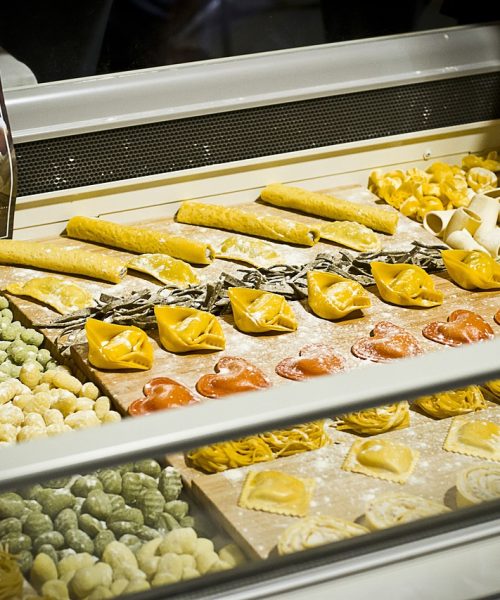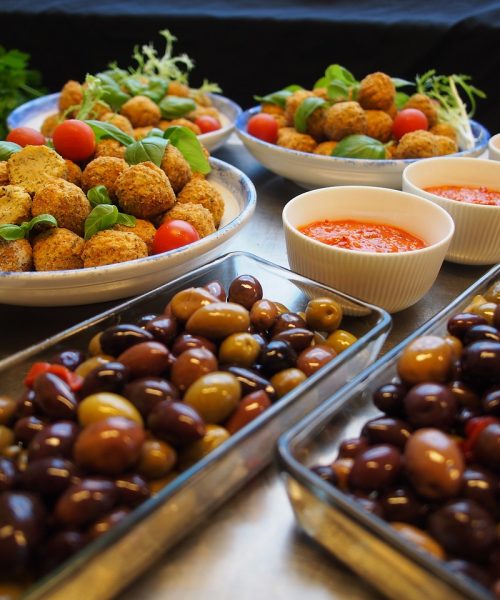Finger foods are small, bite-sized pieces of food that can be eaten without utensils, making them easy and convenient to eat. Finger foods are especially popular among kids because they are fun, easy to hold and eat, and can be enjoyed as a snack or as part of a meal. Finger foods come in a variety of shapes and flavors, from savory to sweet, making them appealing to kids of all ages.
Finger foods can include a wide range of food items such as fruits, vegetables, cheese, sandwiches, mini pizzas, and chicken nuggets. Some finger foods can also be healthy and nutritious, making them an excellent choice for kids who are picky eaters or who struggle to eat a variety of foods.
Making finger foods more kid-friendly is essential for several reasons. First, finger foods provide an opportunity to encourage healthy eating habits in children. By offering a variety of nutritious finger foods, parents can help kids develop a taste for healthy foods, which can lead to a lifetime of healthy eating habits. Second, finger foods can promote independence and self-feeding in children, which can help build confidence and self-esteem. Finally, making finger foods more kid-friendly can make mealtime more enjoyable for both kids and parents, making it a positive and fun experience for the whole family.
Understanding Kids’ Food Preferences
Common food preferences among kids
Kids have a unique set of food preferences that can differ significantly from those of adults. Some common food preferences among kids include a preference for sweet over savory foods, a preference for certain textures, and a tendency to prefer familiar flavors over new and unfamiliar tastes.
- Sweet vs. savory: Many kids have a sweet tooth and tend to prefer sweet foods over savory ones. This can make it challenging to get them to eat foods that are not naturally sweet, such as vegetables or plain proteins.
- Texture preferences: Kids can also have strong preferences for certain textures. Some may prefer smooth and creamy textures, while others may prefer crunchy or chewy textures.
- Familiar vs. new flavors: Children are more likely to eat foods that are familiar to them, and can be hesitant to try new flavors and foods.
How to incorporate these preferences into finger foods
When creating finger foods for kids, it’s important to keep their food preferences in mind. Here are some tips on how to incorporate these preferences into kid-friendly finger foods:
- Examples of sweet and savory finger foods: Offer a variety of sweet and savory finger foods, such as fruit skewers, mini pizzas, and chicken tenders.
- Different textures and how to create them in finger foods: Mix up textures in finger foods by offering a variety of crunchy, chewy, and smooth options, such as carrot sticks, cheese cubes, and hummus.
- Tips for introducing new flavors: Introduce new flavors gradually, and offer them alongside familiar foods. Encourage kids to try new foods by making them visually appealing and fun, such as by cutting them into fun shapes or offering dips and sauces.
Importance of variety and experimentation
Offering a variety of finger foods and encouraging kids to try new flavors and textures is crucial for their development and health. Eating a varied diet can help ensure that kids get all the nutrients they need to grow and develop properly. Encouraging experimentation with new flavors and textures can help expand kids’ palates and make them more willing to try new foods in the future. Additionally, offering a variety of finger foods can make mealtime more enjoyable and interesting for kids.
Incorporating Healthy Ingredients
When it comes to creating healthy finger foods for kids, there are several nutritious ingredients that can be used. These include fruits and vegetables, whole grains, and lean proteins.
- Fruits and vegetables: Fruits and vegetables are packed with essential vitamins and minerals and can be used to create a wide range of delicious and healthy finger foods. Some examples include fruit skewers, veggie cups with hummus or ranch dip, and roasted vegetable bites.
- Whole grains: Whole grains are a great source of fiber, which can help keep kids feeling full and satisfied. Examples of healthy finger foods made with whole grains include mini whole-grain pizzas, whole-grain crackers with cheese or nut butter, and baked sweet potato fries.
- Lean proteins: Lean proteins such as chicken, turkey, and fish can be used to create healthy and filling finger foods. Some examples include chicken tenders, turkey meatballs, and salmon cakes.
How to incorporate these ingredients into kid-friendly finger foods
Incorporating healthy ingredients into kid-friendly finger foods can be simple and easy. Here are some tips:
- Examples of healthy finger foods: Offer a variety of healthy finger foods, such as fruit and veggie skewers, whole-grain crackers with cheese or nut butter, and baked chicken tenders.
- How to make finger foods more nutritious without sacrificing taste: Swap out unhealthy ingredients for healthier ones. For example, use whole-grain flour instead of white flour in pizza crusts, or sweeten yogurt with fruit instead of sugar.
- Tips for preparing and serving healthy finger foods: Make healthy finger foods appealing to kids by offering them in fun and colorful ways, such as by using cookie cutters to make fun shapes or by offering dips and sauces.
Benefits of using healthy ingredients
Using healthy ingredients in finger foods can provide a range of benefits for kids. For example, eating a diet rich in fruits, vegetables, whole grains, and lean proteins can help support healthy growth and development. Additionally, by offering healthy finger foods, parents can help instill healthy eating habits in their kids, which can lead to a lifetime of good health. Finally, using healthy ingredients in finger foods can help make them more filling and satisfying, reducing the likelihood of kids reaching for unhealthy snacks between meals.
Making Finger Foods Fun
Creative presentation ideas
Making finger foods fun and visually appealing can be a great way to encourage kids to try new foods and make mealtime more enjoyable. Here are some creative presentation ideas for finger foods:
- Fun shapes and designs: Use cookie cutters to cut fruits and vegetables into fun shapes, such as stars, hearts, or animals. Kids will love eating their favorite foods in fun shapes and designs.
- Using colorful ingredients: Add some color to finger foods by using a variety of colorful ingredients, such as bell peppers, carrots, and blueberries. The more colorful the finger food, the more appealing it will be to kids.
- Incorporating themes and storytelling: Create finger foods that tell a story or are based on a theme, such as a rainbow-themed fruit skewer or a veggie plate that resembles a garden. Kids will love the creativity and storytelling aspect of these finger foods.
How to involve kids in the cooking process
Involving kids in the cooking process can be a great way to get them excited about trying new foods and can help build their confidence in the kitchen. Here are some tips for involving kids in the cooking process:
- Age-appropriate tasks for kids: Assign age-appropriate tasks for kids, such as mixing ingredients, measuring, and stirring. Make sure tasks are safe and do not involve sharp knives or hot surfaces.
- Importance of safety in the kitchen: Teach kids about kitchen safety, such as how to handle sharp objects and hot surfaces, and how to properly wash their hands.
- Benefits of involving kids in cooking: Involving kids in cooking can help build their confidence in the kitchen, teach them important life skills, and encourage them to try new foods.
Benefits of making finger foods fun
Making finger foods fun and visually appealing can provide several benefits for kids, including:
- Encouraging kids to try new foods: By making finger foods fun and creative, kids may be more willing to try new foods and flavors.
- Making mealtime more enjoyable and interactive: Making finger foods fun can make mealtime more enjoyable and interactive for kids, encouraging them to eat and engage with their food.
- Promoting creativity and imagination: Making finger foods fun can promote creativity and imagination in kids, encouraging them to think outside the box and try new things.
Overall, making finger foods fun can be a great way to encourage healthy eating habits in kids, promote independence and self-feeding, and make mealtime more enjoyable for both kids and parents.
Allergy-Friendly Finger Foods
Food allergies are common among children, and can range from mild to severe. Common food allergies in kids include allergies to peanuts, tree nuts, milk, eggs, soy, wheat, and fish.
- Food allergies and their prevalence: According to the Centers for Disease Control and Prevention (CDC), food allergies affect 1 in 13 children in the United States.
- Common allergens in finger foods: Many finger foods contain common allergens, such as peanuts, tree nuts, milk, and eggs, making it important to be aware of these allergens when preparing and serving finger foods.
How to make finger foods that are safe for kids with allergies
Making finger foods that are safe for kids with allergies requires careful attention to ingredients and preparation methods. Here are some tips:
- Ingredient substitutions and alternatives: Substitute allergenic ingredients with safe alternatives. For example, use sunflower seed butter instead of peanut butter or dairy-free cheese instead of regular cheese.
- Tips for avoiding cross-contamination: Avoid cross-contamination by using separate utensils, cutting boards, and serving dishes for allergenic and non-allergenic foods. Wash hands thoroughly before and after preparing and serving food.
- Importance of reading labels and being prepared: Always read labels carefully to check for potential allergens. Have an emergency plan in place in case of an allergic reaction, and ensure that any caregivers or family members are aware of the child’s food allergies.
Benefits of making allergy-friendly finger foods
Making allergy-friendly finger foods can provide several benefits for kids with food allergies, including:
- Promoting inclusion and diversity: By offering allergy-friendly finger foods, kids with allergies can feel included and part of the mealtime experience.
- Ensuring safety and preventing allergic reactions: Allergy-friendly finger foods can help prevent allergic reactions and keep kids safe.
- Encouraging empathy and understanding: Offering allergy-friendly finger foods can help promote empathy and understanding among kids, teaching them to be mindful of others’ needs and differences.
Overall, making allergy-friendly finger foods is an essential part of promoting safe and inclusive mealtime experiences for kids with food allergies.
Conclusion
In summary, making finger foods more kid-friendly involves understanding kids’ food preferences, incorporating healthy ingredients, making finger foods fun, and offering allergy-friendly options. Key takeaways from each point include:
- Introduction: Finger foods are popular among kids, and making them more kid-friendly can promote healthy eating habits, independence, and enjoyable mealtime experiences.
- Understanding Kids’ Food Preferences: Kids have unique food preferences that can be incorporated into finger foods by offering a variety of flavors, textures, and shapes. Encouraging variety and experimentation can expand kids’ palates and promote healthy eating habits.
- Incorporating Healthy Ingredients: Using nutritious ingredients such as fruits, vegetables, whole grains, and lean proteins can provide several benefits for kids, including healthy growth and development, good nutrition, and reduced hunger.
- Making Finger Foods Fun: Making finger foods fun and visually appealing can encourage kids to try new foods, make mealtime more enjoyable and interactive, and promote creativity and imagination.
- Allergy-Friendly Finger Foods: Offering allergy-friendly finger foods can promote inclusion and diversity, ensure safety, and encourage empathy and understanding among kids.
Making finger foods more kid-friendly is essential for promoting healthy eating habits in kids. By incorporating healthy ingredients, offering variety, making finger foods fun, and offering allergy-friendly options, parents can encourage kids to develop a taste for healthy foods, promote independence and self-feeding, and make mealtime more enjoyable for the whole family.
To make finger foods more kid-friendly, parents can try different recipes, experiment with new ingredients and flavors, and involve kids in the cooking process. By making finger foods fun and visually appealing, parents can encourage kids to try new foods, make mealtime more enjoyable, and promote healthy eating habits. Overall, making finger foods more kid-friendly is an essential part of promoting healthy eating habits and positive mealtime experiences for kids.






